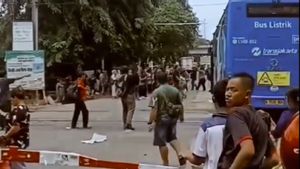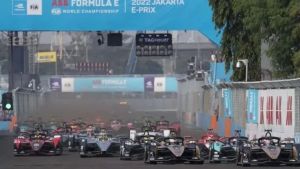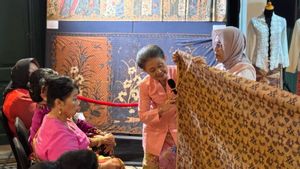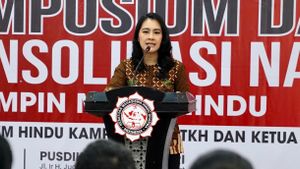SURABAYA - Tabebuya plants are blooming again along protocol roads in the city of Surabaya, East Java along with dry weather conditions that encourage these flower plants to thrive.
"Currently all tabebuya plants are blooming. During the dry season the tabebuya plants will bloom. As soon as it rains it will decrease and decrease," said Acting Head of the Surabaya Cleanliness and Green Open Space (DKRTH) Office, Anna Fajriatin, quoted by Antara, Friday, October 1st.
According to him, the flowers bloom in different colors on each tree, some of which are white, yellow, purple, and pink. This, he said, then made the atmosphere of the city of Surabaya at first glance look like in the land of the samurai.
Anna explained that the Tabebuya plant usually blooms during the dry season. Uniquely, he continued, if exposed to the wind, the flowers will fall out and the others will bloom again.
The Tabebuya flower, which is now also one of the icons of Surabaya, has spread to various points in the City of Heroes, especially on the edge of protocol roads, such as in the areas of Maj. Gen. Sungkono, A. Yani, Gunung Anyar Merr.
"Almost all the streets of Surabaya have been planted with Tabebuya trees, because every district in DKRTH has planted Tabebuya. So there are already a lot of them in Surabaya," he said.
Anna said the plant from Brazil did not require special care. For maintenance, only watering and regular fertilizer is given. The fertilizer used is organic fertilizer produced from the composting process.
"From tree trimming activities, we use it for compost. For plants in the park, we have reduced the use of chemical fertilizers, switching to organic," he said.
As an effort to protect and preserve trees in the city of Surabaya, Anna explained that the city government will impose sanctions on people who destroy trees. One of the sanctions is in the form of replacing trees with similar types.
This is in accordance with the Surabaya City Regional Regulation (Perda) Number 19 of 2014 concerning Tree Protection. For Anna, this tree means a lot to protect the environment and air quality and reduce air pollution.
He gave an example, when a community commits a civil violation such as cutting down a tree without a permit or hitting a Tabebuya tree, their ID card will be detained by the justice operations officer and must replace it with a Tabebuya tree. This also applies not only to trees of that type, but according to what plants are hit.
"In addition, those who already have a permit to cut down trees must also replace them according to the diameter of the tree being cut," he said.
The English, Chinese, Japanese, Arabic, and French versions are automatically generated by the AI. So there may still be inaccuracies in translating, please always see Indonesian as our main language. (system supported by DigitalSiber.id)













